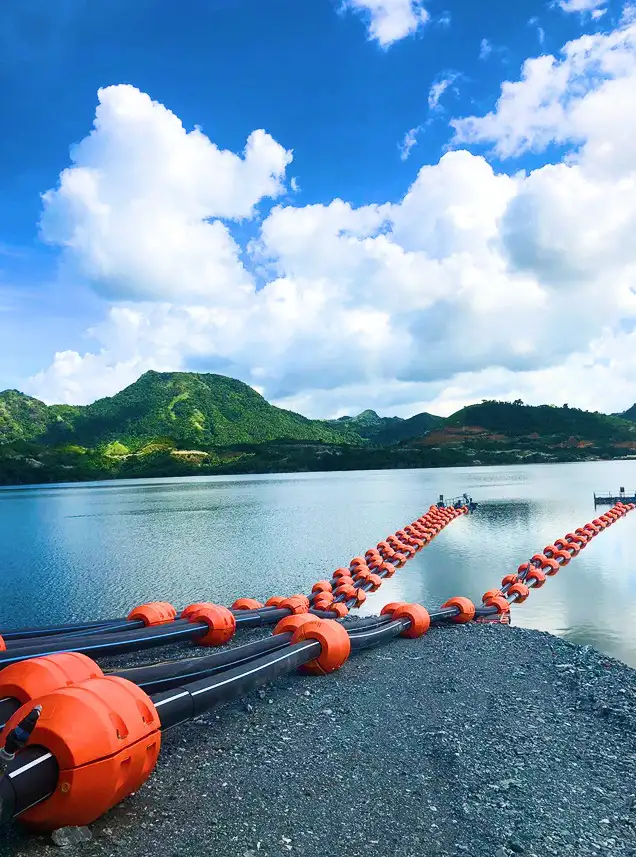
High polymer polyethylene (HPPE) pipe, most commonly referred to as High-Density Polyethylene (HDPE) pipe, is a widely used and versatile plastic piping solution. It's a type of thermoplastic polymer known for its excellent strength-to-density ratio, durability, and resistance to environmental factors.
High polymer polyethylene (PE) pipe is a thermoplastic pipe made from the polymerization of ethylene. The term "high polymer" simply emphasizes that polyethylene is composed of very long molecular chains, which are responsible for its remarkable strength, flexibility, and durability. In the world of piping, this material has become a dominant force, replacing traditional materials like steel, ductile iron, and concrete in a vast array of applications.
HDPE is a strong, durable thermoplastic made from petroleum. Its molecular structure is characterized by tightly packed linear polymer chains, which gives it its high density and robust physical properties. Compared to other polyethylene types like MDPE (Medium-Density Polyethylene) and LDPE (Low-Density Polyethylene), HDPE offers superior rigidity, durability, and resistance to stress.
PE pipe is classified by its density, which directly relates to its strength and stiffness.
HDPE (High-Density Polyethylene): This is the strongest and most rigid type. It has an excellent strength-to-density ratio and is the standard for pressure applications like water mains, gas distribution, and industrial process piping.
MDPE (Medium-Density Polyethylene): Slightly more flexible than HDPE but with lower strength. It is commonly used for natural gas distribution (often colored yellow) and some low-pressure applications.
LDPE (Low-Density Polyethylene): The most flexible type. It is not typically used for major pressure pipelines but is common in micro-irrigation, drip tubing, and non-structural applications.
Durability and Long Service Life: HDPE pipes are incredibly tough, resilient, and resistant to impacts, abrasion, and external loads. They can withstand extreme temperatures, seismic activity, pressure surges, and UV exposure. With proper installation, HDPE pipes are estimated to last 50 years or even over 100 years.
Leak-Free Fusion Joints: A significant advantage of HDPE pipes is their ability to be joined by heat fusion (butt welding, electrofusion welding, socket welding). This process melts the pipe ends together, creating a homogeneous, leak-free joint that is as strong as the pipe itself. This eliminates the risk of leaks often associated with traditional pipe joints.
Corrosion, Chemical, and Abrasion Resistance: HDPE is non-corrosive and resistant to a wide range of chemicals, acids, bases, and salts. It does not rust, rot, or support biological growth, making it ideal for harsh environments and for transporting various fluids, including hazardous materials. Its smooth inner surface also minimizes friction and scaling, maintaining flow capacity over time.
Flexibility: HDPE pipes are highly flexible, allowing them to bend around obstacles and adapt to uneven terrain. This flexibility reduces the need for fittings and makes them suitable for trenchless installation methods like horizontal directional drilling (HDD) and pipe bursting, which minimize ground disruption. They can also withstand ground movements, including those in earthquake-prone areas.
Lightweight: Compared to traditional materials like steel, concrete, and iron, HDPE is significantly lighter. This translates to lower transportation costs, easier handling, and faster, more economical installation, often without the need for heavy lifting equipment.
Cost-Effectiveness: The combination of durability, leak-free joints, ease of installation, and low maintenance requirements makes HDPE pipes a cost-effective solution over their long service life.
Safe for Potable Water: Food-grade polyethylene virgin material is used to fabricate HDPE pipes, making them safe for the transfer of drinking water.
UV Resistance: Black HDPE pipes typically contain carbon black, which provides excellent UV resistance, allowing them to be installed above ground for extended periods without degradation.
HDPE pipes are primarily manufactured through an extrusion process:
Raw Material Preparation: High-density polyethylene resin, typically in pellet form, is prepared and often blended with additives like UV stabilizers and pigments.
Extrusion: The HDPE resin is fed into an extruder, where it is melted and homogenized by a rotating screw within a heated barrel (temperatures typically range from 180°C to 240°C). The molten plastic is then forced through a die, which shapes it into a continuous pipe.
Cooling and Calibration: The hot pipe exits the die and is immediately cooled, usually by submerging it in or spraying it with cold water. This solidification process is carefully controlled to prevent deformation and maintain the pipe's precise dimensions. Vacuum calibration systems are often used to ensure consistent diameter and roundness.
Haul-Off and Cutting: Once cooled and solidified, the pipe is pulled along the production line by a haul-off machine at a constant speed. Automated cutters then slice the pipe into predetermined lengths, or it can be coiled for longer runs.
Quality Control: Throughout the process, rigorous quality control measures are implemented, including dimensional checks, pressure testing, and visual inspection, to ensure the pipes meet industry standards.
HDPE pipes are used across a vast range of industries and applications, including:
Water Supply and Distribution: Potable water mains, rural irrigation systems.
Sewer and Drainage Systems: Municipal sewer mains, wastewater treatment, stormwater and drainage pipes.
Gas Transmission Systems: Natural gas distribution.
Industrial Applications: Transporting chemicals, slurries, and industrial effluents.
Mining: Slurry transfer lines.
Conduit: Electrical and communication conduits.
Agriculture: Irrigation systems (drip irrigation, sprinklers).
Marine Applications: Aquaculture and underwater pipelines.
In conclusion, High Polymer Polyethylene (HDPE) pipe is a modern, reliable, and highly effective solution for fluid and gas transfer, offering significant advantages over traditional piping materials due to its exceptional properties and ease of installation.
